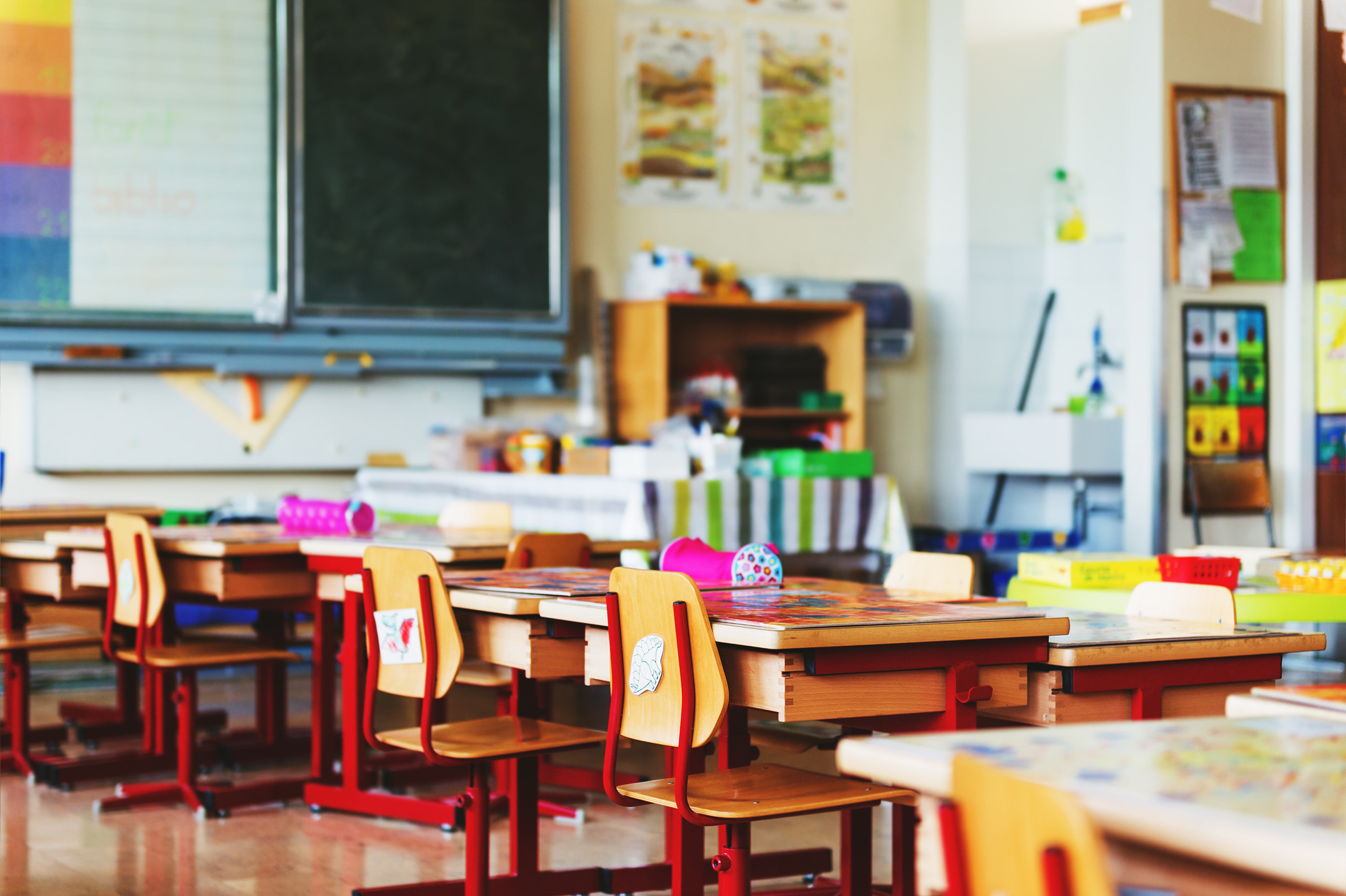
Teachers instinctively recognize that a welcoming classroom environment can make a positive impact on students’ ability and willingness to learn. Now, it’s becoming increasingly clear that impactful environmental factors go beyond decorative classroom elements to include characteristics such as indoor air quality, temperature, and lighting.
Numerous studies indicate that indoor air quality, temperature, and lighting can influence mood, productivity, and test scores. But getting the right environmental balance can be tough. Within a smart building, school environment solutions can be adapted to fit the immediate needs of the classroom. Better still, smart building solutions can be integrated into new buildings for improved environmental conditions and long-term cost savings.
Air Quality Contributes to Student Health
Many factors can impact indoor air quality (IAQ), making it a contributor to a wide range of ailments. From coughing and eye irritation to headaches and respiratory discomfort, the U.S. Environmental Protection Agency acknowledges IAQ as one of the top five environmental risks to public health.
Moreover, EPA reports that IAQ factors–which might encompass dust mites, mold spores, and pests, as well as volatile organic compounds (VOCs), humidity, and carbon dioxide (CO2)–can impact student, faculty, and staff performance and attendance levels. Research also indicates that IAQ affects students’ attention spans and performance on standardized tests.
The first step to improving IAQ is environmental monitoring, which can help identify when an issue may be present. Smart building technology can integrate sensors that can, for example, increase ventilation in the event certain issues are detected. New guidance continues to support the use of increased ventilation to treat negative IAQ.
Temperature Impacts Students’ Ability to Learn
Excessive heat can make it more difficult for students to learn. Studies have revealed that students consistently perform worse on tests when they’re hot. A 2018 study that tracked 10 million secondary students who took the PSAT exam found that cumulative heat exposure decreased the productivity of instructional time. In school without air conditioning, each 1°F increase in school year temperature reduced the amount students learned that year by 1%.
EdWeek points out that heat can also make it more difficult for students to regulate behavior. The publication also reported, following a 2021 Research Center survey, that nearly half of educators surveyed reported heating and cooling to be a significant problem in their school district.
By installing building automation systems, schools gain the ability to automatically adjust temperatures based on daily schedules. While students and faculty can work in a comfortable building during the day, energy use can be reduced during the evening and days off to reduce strain on infrastructure. In a truly smart building, these systems can be integrated with sensors that allow HVAC to adapt based on occupancy and sunlight exposure for greater reductions in energy usage and costs.
Good Lighting Improves Academic Outcomes and Student Behavior
Numerous studies have revealed the connection between exposure to natural sunlight and learning outcomes. Among them is a 1999 study of 21,000 elementary school students that concluded that students exposed to higher levels of sunlight during the school day saw 26% higher reading outcomes and 20% higher math outcomes than other students. In other studies, use of blue-enriched bulbs has been shown to help teens reset their circadian rhythms, improving alertness during the school day for better academic outcomes. Studies have also shown an increase in positive behavior within classrooms that use blue-light LED fixtures.
The challenge, however, has been how to adapt lighting to specific classroom needs. This is where today’s intelligent lighting solutions can help.
Intelligent lighting solutions can be adapted throughout the day to align with circadian rhythms. Through tunable lighting fixtures, lighting color temperatures can be raised and lowered throughout the day, mimicking the movement of the sun. Typically, schools automate this process by integrating intelligent lighting into building automation systems. In other cases, systems can be designed to give teachers the ability to individually control lighting via a touchpad or app. This greater control allows lighting to be adjusted based on whether students need help focusing or calming down.
Identify the Smartest Solutions for Your School
Whether your school district is looking to improve test scores or attendance rates, the evidence indicates that environmental factors can make a tremendous impact. While these upgrades may seem cost-prohibitive, the truth is that the right strategy can produce cost savings.
This is where a smart building consultant can help. Because a smart building consultant brings a holistic approach to system design, they can identify opportunities to reduce duplicate systems. In some cases, a smart building consultant can advise on the most efficient use of emerging technologies that lower upfront and long-term costs to be comparable with conventional solutions.
The team at CRUX is committed to helping school districts maximize the good they do for their students, faculty, staff, and communities. We can help customize school environment solutions that work with your budget. If you’re ready to learn how environmental improvements can make teaching more effective, schedule a consultation today.